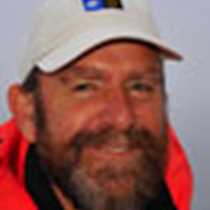Anse Lazio and La Digue, Seychelles
After an epic two-flight marathon to the capital of Seychelles, Victoria, Mahé, we were mightily relieved to reach the sanctuary of the good ship National Geographic Explorer and blessed to fall asleep lulled by the easy motion of the ship on a gentle ocean. At first light we were already among the more northerly granite islands, and after a lazy breakfast had an introduction to the ship, the staff of naturalists, Zodiac operations and snorkeling techniques. There was time to collect flippers, mask and wetsuit and half an hour later we had anchored off the north shore of Praslin at Anse Lazio. This beach is famous, listed among the Ten Most Beautiful Beaches in the World. Once ashore by Zodiac and paddling about like happy penguins in the surf, we were soon among the Hundred Most Contented Passengers in the Wild: bliss after having been cooped up in planes, departure lounges and hotels for the last few days.
Over lunch we steamed east round the north coast of Praslin and crossed the narrow channel to the beautiful island of La Digue. Here was a second chance to slow down and become a little more Seychellois: some strolled, some cycled, and the rest took advantage of the traditional transport of the island, the oxcart; which is, ironically, even slower than walking or cycling. This brought us to the Union Estate, one of the last examples of the coconut plantations once the mainstay of the tropics. Evenly spaced coconut trees produced fallen coconuts; these were then husked and the nut split to pry out the white flesh or copra. After drying in kilns and packing in gunny bags, thousands of tons were exported on copra schooners which called at every island throughout the Indian and Pacific Oceans. We saw a collection of giant tortoises in a pen at the foot of a giant granite outcrop, and then continued to Source d’Argent, a picturesque blend of beach and boulders which has been a favorite location for numerous pirate films. There was a welcome drink from local green coconuts, a chance to swim and even time to shop in the small stores on the way back to the jetty. Meanwhile, the naturalists explored the coastal forest on foot, and were thrilled to have seen the Seychelles Black Paradise Flycatcher, a lively, jet-black bird with foot-long tail streamers. There are less than 200 of these in the wild, all but a handful on this one island. The locals are justly proud of this unique bird and have managed to safeguard its habitat, well aware that now their own livelihood depends on visitors like us who come to admire such rare treasures.
After an epic two-flight marathon to the capital of Seychelles, Victoria, Mahé, we were mightily relieved to reach the sanctuary of the good ship National Geographic Explorer and blessed to fall asleep lulled by the easy motion of the ship on a gentle ocean. At first light we were already among the more northerly granite islands, and after a lazy breakfast had an introduction to the ship, the staff of naturalists, Zodiac operations and snorkeling techniques. There was time to collect flippers, mask and wetsuit and half an hour later we had anchored off the north shore of Praslin at Anse Lazio. This beach is famous, listed among the Ten Most Beautiful Beaches in the World. Once ashore by Zodiac and paddling about like happy penguins in the surf, we were soon among the Hundred Most Contented Passengers in the Wild: bliss after having been cooped up in planes, departure lounges and hotels for the last few days.
Over lunch we steamed east round the north coast of Praslin and crossed the narrow channel to the beautiful island of La Digue. Here was a second chance to slow down and become a little more Seychellois: some strolled, some cycled, and the rest took advantage of the traditional transport of the island, the oxcart; which is, ironically, even slower than walking or cycling. This brought us to the Union Estate, one of the last examples of the coconut plantations once the mainstay of the tropics. Evenly spaced coconut trees produced fallen coconuts; these were then husked and the nut split to pry out the white flesh or copra. After drying in kilns and packing in gunny bags, thousands of tons were exported on copra schooners which called at every island throughout the Indian and Pacific Oceans. We saw a collection of giant tortoises in a pen at the foot of a giant granite outcrop, and then continued to Source d’Argent, a picturesque blend of beach and boulders which has been a favorite location for numerous pirate films. There was a welcome drink from local green coconuts, a chance to swim and even time to shop in the small stores on the way back to the jetty. Meanwhile, the naturalists explored the coastal forest on foot, and were thrilled to have seen the Seychelles Black Paradise Flycatcher, a lively, jet-black bird with foot-long tail streamers. There are less than 200 of these in the wild, all but a handful on this one island. The locals are justly proud of this unique bird and have managed to safeguard its habitat, well aware that now their own livelihood depends on visitors like us who come to admire such rare treasures.



